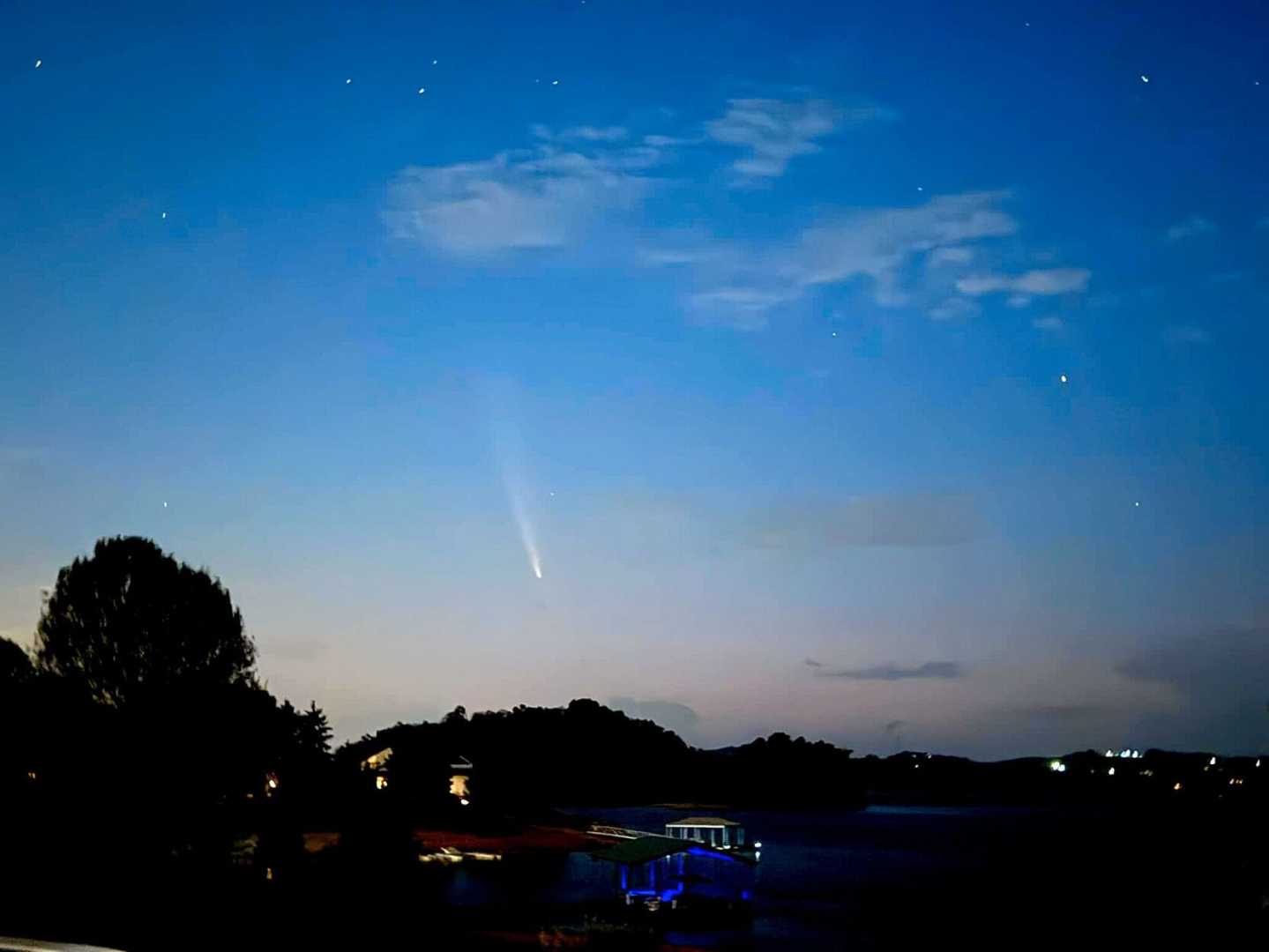News
Comet Tsuchinshan-ATLAS Visible Over Quebec: An Astronomical Event

The comet Tsuchinshan-ATLAS will be observable over Quebec tonight between 7:00 PM and 8:30 PM. Amateur astronomers have been able to view the comet since the beginning of the week, and the spectacle will continue for a few more days.
“The comet is somewhat less visible than we had hoped,” said Olivier Hernandez, Director of the Montreal Planetarium. “It lost pieces after passing behind the sun, but you can still photograph it with a phone in Montreal. In areas with less light pollution, it can be seen with the naked eye.”
The comet passed behind the sun at the end of September, coming within 0.4 astronomical units (AU)—the distance from the Earth to the Sun—on September 27th. It became visible again about a week ago, although clouds obstructed the view in Montreal at that time.
“We were able to see it on October 12th, then there were clouds,” explained Hernandez. “But it has cleared since yesterday.”
Tsuchinshan-ATLAS was discovered in early 2023 by Chinese and South African astronomers who named it. It came closest to Earth on October 13th, at a distance of 70 million kilometers or 0.46 AU, and is currently at 0.53 AU from Earth.
Visibility of comets is gauged using a scale developed by Ptolemy, a Greek geographer and astronomer from the second century. The Sun has a magnitude of -27, the Moon -12, and Venus and Jupiter -2. For a celestial object to be visible, it needs to have a magnitude lower than +5 or +6, according to Hernandez.
“Before the comet passed behind the Sun, it was expected to have a brightness of -3 when closest to Earth on October 13th. We measured it at -2.5, which is very good. Currently, it’s at +4 and is expected to rise above 5 or 6 in the next 2-3 days,” Hernandez noted.
To see the comet, viewers should look westward. “You can follow the end of the Big Dipper to reach the star Arcturus, which is very visible, and then easily locate the comet,” said Alain Vézina of the Montreal Planetarium’s astronomy society. A sky map he created for La Presse shows the comet’s position at 7:00 PM during total twilight in the coming days. After 7:00 PM, it descends.
The full moon complicates viewing. “It’s best to observe as close to 7:00 PM as possible to minimize moonlight,” advised Hernandez. After 8:30 PM, the comet will be below the horizon.
Even if the comet isn’t visible to the naked eye, it can appear on a phone photo up to a magnitude of +7 or +8.
This comet originates from a solar system region called the “Oort Cloud,” where most comets come from. It ventures as far as 270 AU from the Sun and will return near Earth in 80,000 years, according to Hernandez. For comparison, the Voyager spacecrafts are currently 135 and 165 AU from Earth, NASA says.
Comets have three “tails.” For Tsuchinshan-ATLAS, only the dust tail is visible to the naked eye. There is also an ionized gas tail and a third tail of dust particles trailing behind the comet, which from Earth can appear to be ahead of it. This “anti-tail” could be visible with a 5 to 15-second camera exposure.
A comet’s tail can extend over 100,000 kilometers, with a nucleus weighing several hundred or thousand tonnes. However, estimating this mass is challenging. “Preliminary size estimates for C/2023 a3 ranged from 20 to 40 km,” Hernandez stated. “Then it fell to around 3 to 6 km, but it’s so uncertain that NASA’s Jet Propulsion Laboratory doesn’t include it in its databases or ephemeris calculations.”












